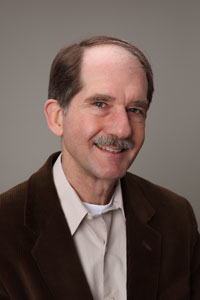Trend toward acceptance is dramatic, says long-term survey

Tom W. Smith
Americans are becoming “dramatically” more accepting of gay men and lesbians, according to a new report from a respected, long-running social survey. And, as suggested by other recent surveys, this latest report indicates younger generations are driving that trend, both in terms of supporting basic civil liberties and accepting marriage equality.
The latest findings come from “Public Attitudes toward Homosexuality,” a report released September 28 and based on the 2010 General Social Survey (GSS). The survey is conducted by NORC (formerly the National Opinion Research Center), a social science research center at the University of Chicago.
The GSS is the most widely used source of information about social trends, with the exception of the U.S. Census, says NORC. It began in 1972 and is also one of the longest-running polls to ask about marriage equality, having first posed the question in 1988.
Forty-six percent of the 2,000 adults surveyed in 2010 supported marriage for same-sex couples, and 40 percent opposed. This support is up from only 11 percent in 1988, compared to the 68 percent who opposed it then.
Attitudes towards sexual relations between two same-sex adults have also changed significantly. In 1973, 70 percent of those surveyed said such relations were “always wrong.” This rose to a high of 75 percent in 1987 and 1988. But in 2010, it fell to 44 percent.
In a separate NORC report based on the GSS, released in August, support for allowing an “admitted homosexual” to speak in one’s community grew from 62 percent to 86 percent between 1973 and 2010. Support for allowing that person to teach at a college or university rose from 48 percent to 84 percent in the same time period. And support for having a book in favor of homosexuality in a public library rose from 54 percent to 78 percent between 1973 and 2010.
The data reveals a “large generation gap,” said Tom W. Smith, director of the GSS and author of the report. Among people under 30 years old, 64 percent supported marriage equality. Among those over 70 years old, only 27 percent did.
And only 32 percent of those under 30 felt sexual relations between same-sex adults was “always” or “almost always” wrong, versus 69 percent of those over 70.
This age-based difference, said Smith, is “the strongest factor” explaining the trend towards greater acceptance.
Smith noted, however, that there is a “sharp polarization” of public opinion on gay issues—unlike most political issues, where the majority of people fall into the middle.
While 44 percent of the people in 2010 said same-sex sexual relations were “always wrong” and 41 percent said they were “not wrong at all,” only 3 percent took the middle position of “almost always wrong” and 8 percent the middle position of “wrong only sometimes.” (The remainder did not know or did not answer.)
This polarization has existed since the survey began. In 1973, 70 percent of people said it was “always wrong” and 11 percent said it was “not wrong at all,” but only 7 percent each took the middle positions of “almost always wrong” or “wrong only sometimes.”
Still, Smith said, “despite the polarization, there is a strong trend towards acceptance.”
Several other recent polls have also found a generation gap, and a slight majority overall now in favor of marriage equality. A CNN poll in April found 51 percent of the 824 adults surveyed supported same-sex marriage, with 47 percent opposed. Among those under age 50, 60 percent supported it, versus 42 percent of those over 50.
A Gallup poll of 1,018 adults in May found 53 percent overall supported marriage equality, but 70 percent of those 18 to 34 years of age did so, versus 39 percent of those over 55.
An ABC/Washington Post poll of 1,001 adults in July found 51 percent supported allowing same-sex marriages, with 45 percent opposed.
Poll results released in September by the Associated Press and the National Constitution Center showed 53 percent of the 1,000 adults surveyed supported marriage equality, with 44 percent opposed.
Only a Quinnipac University poll of 2,311 registered voters in July found more people opposed to marriage for same-sex couples than in favor. Forty-eight percent opposed and 46 percent favored. But Quinnipac asked its question specific to each state: “Would you support or oppose a law in your state that would allow same-sex couples to get married?”
Smith said the slight differences between the GSS results and those of the other polls (most of which showed a small majority in favor of marriage equality) could be attributed to a variety of factors, including the specific wording of the question and the quality of the sample.
“The differences are small enough that there’s no real issue,” he said. “All are showing about the same level of support.”
Those surveys that have been conducted repeatedly, he said, all show “the trend is in the same direction” towards increased acceptance of homosexuality in general and of marriage rights for same-sex couples.
And although some polls found greater acceptance among women and Democrats, versus men and Republicans, Smith said “the strongest factor” explaining the change over time is the generational difference.
The greater support among younger age groups, he said, “is an engine that will continue to drive change in the future.”


Leave a Reply